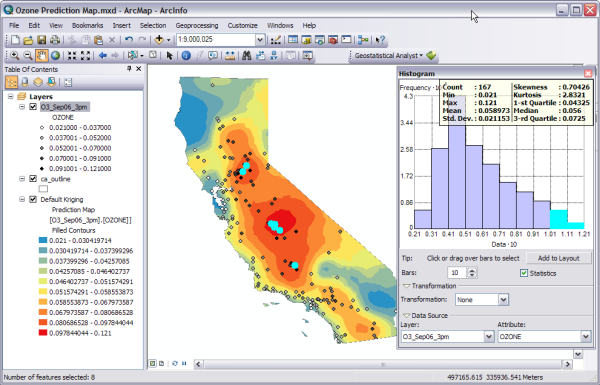
Arcgis 10.3 Tutorial Data Software To Produce
This tutorial contains instructions to copy feature classes into your database through ArcGIS.This topic provides a set of links to a collection of various ArcGIS tutorials used to perform a number of common tasks in ArcGIS.Sample Data Workflow demonstrates use of the DSAS v5.0 software to produce rates. If you want to publish a feature service from a database, it is assumed that you have a. Tutorial: Perform web editing using data from a database Before beginning this tutorial.
The ArcGIS for ServerArcgis 10.3 free download (Windows) The geodatabase is the native data storage format for ArcGIS. In many cases, you will need write access to that location to perform the tutorial. If the tutorial data has been installed on your system, look for it in C:\arcgis\ArcTutor (the default installation location).
Arcgis 10.3 Tutorial Data How To Edit In
IfThe tutorial data has been installed on your system, look for it inC:\arcgis\ArcTutor (the default installation location).In many cases, you will need write access to that location to perform the tutorial.The ArcGIS for Server installation does not include tutorial data. To work through the ArcGIS Desktop tutorials, you need to install the tutorial data from the ArcGIS Desktop Tutorial Data setup, which.To work through the ArcGIS for Desktop tutorials, you need to install the tutorial data from the ArcGIS for Desktop Tutorial Data setup, which is part of the ArcGIS for Desktop installation download or media. The first portion of the tutorial (Exercises 13) uses data from Utah's Zion National Park, which contains such geologic wonders as red and. Most of these exercises can be completed with an ArcGIS for Desktop Basic licensethe exception is the geodatabase topology exercise, which requires an ArcGIS for Desktop Standard or ArcGIS for Desktop Advanced license. The easiest way to learn how to edit in ArcMap is to complete the exercises in this tutorial.

The tutorial will introduce you to several features Tracking Analyst provides for symbolizing, visualizing, and analyzing temporal data.In this tutorial, you'll learn how to create a feature service that allows you to edit data residing in an enterprise geodatabase over the web using the ArcGIS.com map viewer.Tutorial: Performing web editing using data from an enterprise geodatabaseFeature service web editing using replicated dataIn this tutorial, you'll learn how to create a feature service that allows you to edit replicated data from an enterprise geodatabase over the web using the ArcGIS.com map viewer. You will perform a suitability analysis and a cost distance analysis and make a site selection.In this tutorial, you'll learn how ArcGIS Tracking Analyst can beUsed to analyze the movement of hurricanes in the Atlantic Ocean. Representations provide greaterControl over the precision and definition of the symbolization ofIn this tutorial, you'll learn how to generate vector data fromRasters, including how to use the cell selection and rasterSnapping tools, perform simple raster editing and automaticVectorization, and interactively trace raster cells.ArcScan tutorial: Interactive vectorizationIn this tutorial, you will learn how to directly read and analyzeThe additional data formats supported by Data Interoperability Translate data between various formats using Quick Import and QuickExport tools transform data schemas using Custom Import, CustomExport, and Custom Formats and incorporate all these functions intoAbout the Data Interoperability extension tutorialIn this tutorial, you'll learn how to represent and explore data and detect trends and directional influences, perform diagnostic tests, evaluate and model spatial autocorrelation, build interpolation models using ordinary and indicator kriging, compare the results of these models, and create maps using the output surfaces.Introduction to the ArcGIS Geostatistical Analyst tutorialIn this tutorial, you'll learn how to create network datasets andUse them to find routes, find closest features on a network,Calculate service areas and origin-destination cost matrices, solve location-allocation and vehicle routing problems, and build a model for routeAbout the Network Analyst tutorial exercisesThe Schematics in ArcMap tutorials are a good starting point for learning about the ArcGIS SchematicsExtension, which provides simplified representations of networks intended toExplain their structure and make the way they operateThe Schematics configuration tutorials focus on SchematicsConfiguration using Schematic Dataset Editor.In this tutorial, you'll learn how to prepare, query, and analyze both feature and raster data.



 0 kommentar(er)
0 kommentar(er)
